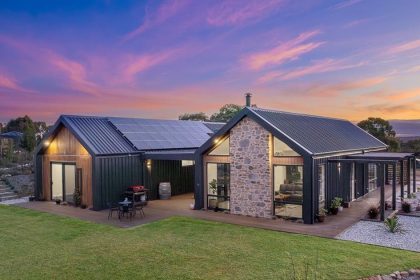Australia’s leading Earth science agency has handed homeowners free resources to protect their aging properties against impending earthquakes.
Created by Geoscience Australia and the University of Adelaide, Australia’s leading seismologists have compiled scientific findings from earthquake hot zones like New Zealand’s Christchurch to give homeowners the most up-to-date advice on how to protect older buildings – and their occupants – from earthquake damage.
Being old means these structures are most likely not designed to meet the standard required by current codes of practice or are using the more advanced construction technology and building materials available today.
More importantly, masonry structures are more brittle than concrete, steel or timber structures, making them extremely vulnerable to even small earthquakes.
The organisation’s Head of Community Safety Branch, Dr John Dawson, said the information was vital to helping both Aussies “survive the shake”.
“We wanted to give people a clear and easy-to-understand guide to reinforcing existing masonry buildings, especially those built prior to 1946 and well before earthquake hazard became a mandatory part of our building codes,” he said.
“Alongside our partners at the Western Australian Department of Fire and Emergency Services, the University of Adelaide and the Shire of York, we’ve developed a suite of resources that will give property owners the information they need.”
According to Mr Dawson, homeowners can significantly reduce earthquake damage by implementing a few “simple” retrofits to older homes.
“The retrofitting is fairly straightforward, and usually can be incorporated into planned renovation works,” Dr Dawson said.
“We have resources for property owners so they can make the right decisions for their buildings, and we also have more technical guides for the design profession and construction industry, which guide them through the retrofit requirements.
“Retrofitting for earthquake safety doesn’t have to be a complicated and expensive process.”
More earthquakes are on the way
Earthquakes might not be common down under, but they do happen. According to Australian Climate Services, more than 100 low-magnitude earthquakes occur yearly, particularly around Melbournes CBD.
And according to seismologists, that is only the beginning. The organisation expects these earthquakes to intensify as Australia’s geological plate moves slowly towards Indonesia in the North.
In fact, Victoria has already started to feel the effects, recording a 5.1-magnitude earthquake in Rawson back in 2021 that caused significant structural damage to properties in Melbourne over 100km away.
With the garden state having the largest percentage of homes built before the 1900s of any state (34 per cent), Mr Dawson said homeowners greatly underestimate the risk of earthquake damage.
“We don’t have many big earthquakes like Japan and New Zealand, but they do happen, and when they happen, they can cause damage,” Dr Dawson said.
“Almost every town in Australia has older heritage buildings: old churches, post offices, town halls and even high street shops.
“They have considerable cultural value, as part of our national history, and we want to give local communities the information they need to protect their heritage against earthquake damage.”







